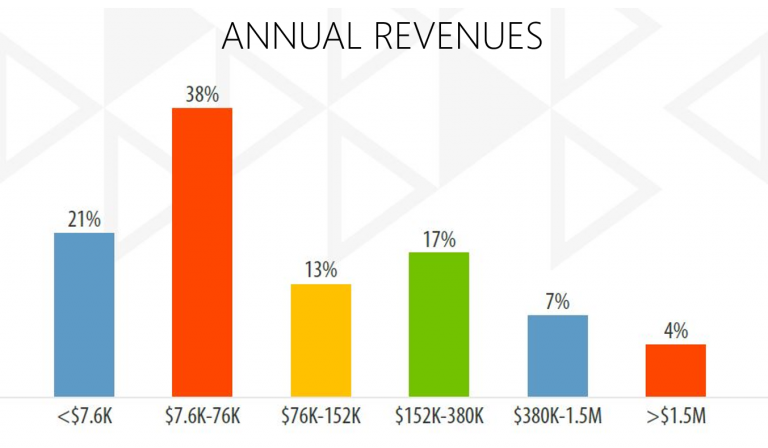

Amazon has played a big role in reducing barriers to entry in Asia for small-scale e-commerce providers.
Can David compete with Goliath when it comes to e-commerce in Asia? The numbers say yes.
We recently reported on e-commerce opportunities in China, and the evidence uncovered clearly shows that small sellers have as much a chance to succeed in Asia as larger competitors.
Let’s look at the data that supports the strength of the Asia e-commerce opportunity, as well as keys to success for smaller companies.
China consumers account for about 50 percent of the $1 trillion global e-commerce business in 2016. This numbers speaks to the huge acceptance of Chinese buyers of an open marketplace where small and large companies around the world compete for their business.
Perhaps the most glaring stat supporting the impact of small providers is that 59 percent of 900 online merchants Payoneer researched in China make $76,000 or less in annual revenue (see graphic below).


Amazon, which generates over 1 billion monthly purchases through its online marketplace, has also done a lot to improve the competitive landscape in Asia for small e-commerce companies around the world. Small Asian providers can ship directly to consumers in China other parts of Asia through Amazon, enabling them to maintain competitive cost structures by eliminating third-party distributors.
Similarly, providers from around the world can conduct e-commerce sales and direct distribution activities with Asian consumers. It is much more difficult for companies with brick-and-mortar operations to create visibility for their products in the Asian marketplace in a cost-effective way.
The most obvious key to success in Asia as a small e-commerce provider is to participate in large online marketplaces. These online platforms enable the most effective operational exchanges between Asian consumers and global providers who want their business. This low-cost marketplace venue levels the playing field regardless of provider size.
Another competitive factor for small providers is establishing differentiation relative to local providers. Asian consumers turn to the web when they can’t get the right products at the right prices from local merchants. Therefore, you need to research local industry offerings and figure out how to optimize your value on both quality and price factors.
Research into logistics and marketing opportunities and challenges is necessary as well. Understanding the cultural factors that influence marketing effectiveness and ensuring a strong customer experience are critical in global e-commerce. In some cases, you might need local vendor partners to provide services that are difficult or time-consuming to provide from your home market. Identifying the right partners takes time and involves risk.
Over 2 billion people will shop online by 2019, according to eMarketer. Chinese and Asian consumers are expected to represent a large contingent of these buyers, as they already do. The evidence for small-business opportunity is clear. It is up to eSellers to optimize strategies to take advantage.